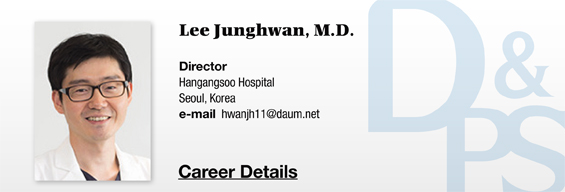
In the previous series, we discussed topics such as trends and developments in burn wound dressing and in laser scar revision. As for the recent developments and trends in burn wound dressing, we compared the benefits of topical antibacterial agents and Silvadine. We also looked at biologic dressings using keratinocyte culture, collagen, amnion and growth factors.
The series titled “Laser Scar Revision, Recent Trends” discussed continuous technological developments in the field of dermatologic laser and described laser as a safe and effective modality of scar removal. We also looked at the fact that laser is being used as an adjunct to traditional therapies or surgery. Particularly, in scar treatment, largely three types of laser – PDL (millisecond-domain pulsed dye lasers), Q-switched Nd:YAG (nanosecond-domain Q-switched Nd:YAG Lasers) and ablative/nonablative fractional lasers (AFLs and NAFLs) are used.
In this article, I would like to talk about a surprisingly common phenomenon of coffee burns.
[Advertisement] MAGNUM(Q-switched Nd:YAG Laser) – Manufacturer: (www.i-dana.com)]
The cooler climate drives up consumption of hot beverages including coffee. People hurrying past the busy streets holding a tumbler of hot coffee is a common sight in the morning. In the outpatient burn care center, I see an increased number of patients with burns from spilled hot coffee. One may not take the danger of hot coffee spilled on exposed skin seriously, but it is common enough to make a social issue sometimes.
In a famous case in Korea, spilled coffee in an airplane led to hospitalization and in the US, there was a very famous case where an old lady spilled hot McDonalds coffee on her lap and got awarded USD 2.86 million for damage. Let’s take a look at the risk of burns related to hot beverages.
The risk of hot coffee
There is a phrase saying “caution, hot beverage” in a take-out cup. The temperature of a hot Americano is about 83-87℃, and that of café latte is 70℃. Most hot beverages are set to be about 70-85℃ hot as beverages taste better at temperatures 78-82℃. Can burns happen at temperatures lower than 100℃? The answer is yes. The important factor of a burn is the temperature and duration of exposure.
Liquids of 100℃ in temperature cause burns with instantaneous exposure, and a second of exposure to liquid at 68℃ and 5 minutes of exposure to liquids at 48℃ is enough to cause burns. Therefore, if the spilled hot coffee is not quickly removed and the skin is exposed for several seconds, it is very likely it will result in at least a second degree burn that requires long-term treatment.
-To be continued-




















